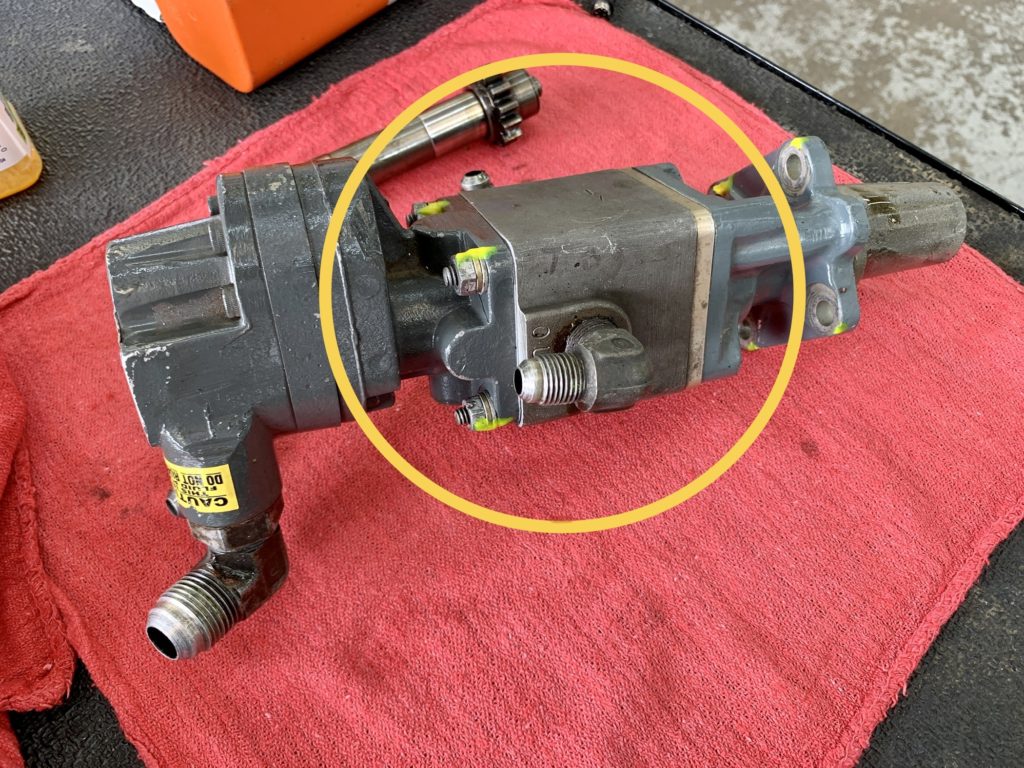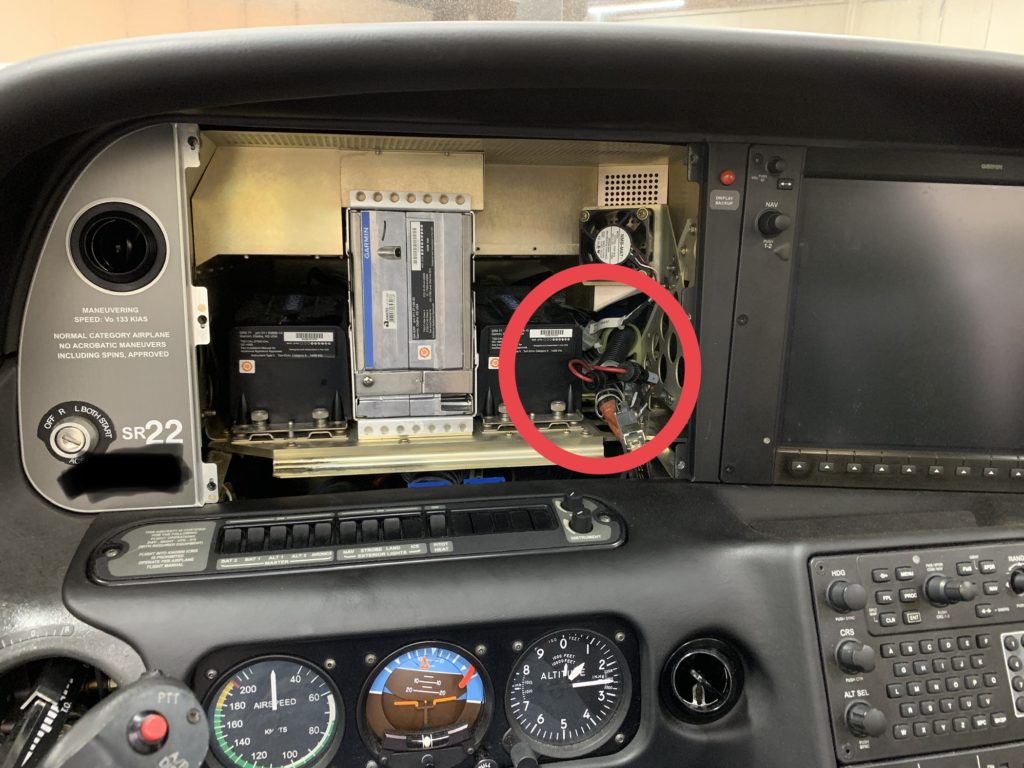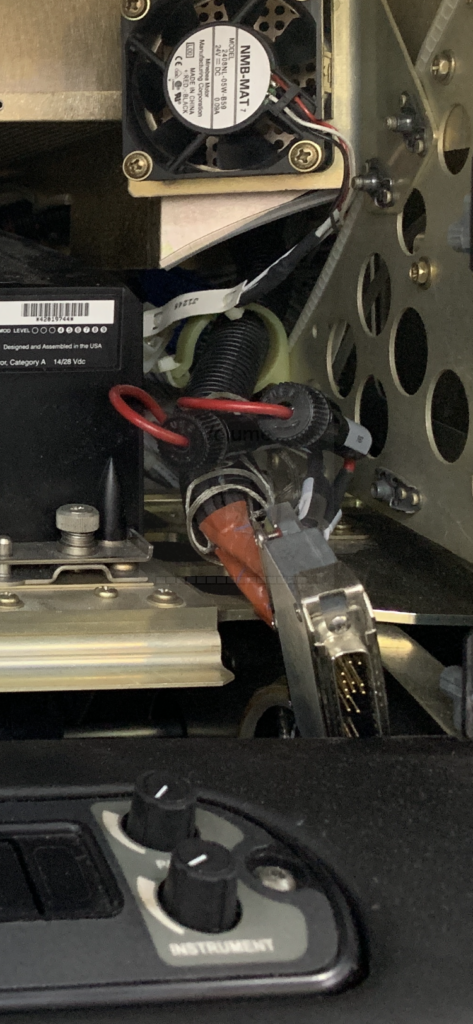Podcast: Play in new window | Download

The part in the yellow circle is an oil scavenge pump that returns oil back to the engine oil sump after it lubricates the turbocharger center bearings. The right side of the assembly is the adapter that fits into the engine accessory case. The left side of the assembly is the hydraulic pump that is used for the landing gear system, the flap system, and the nosegear steering system in this Aerostar 601.
Inside the oil scavenge pump, there are two oil seals, (sometimes called garlock seals,) and two o-rings.
In today’s episode, we discuss this type of pump that reminded me of A&P school from years ago… it’s called a “gerotor pump.” It has a gear within a gear.
Listen to the audio for the details on fixing this oil leak.
We also talk about a Mooney M20K engine in this episode… we lapped the exhaust valve in cylinder #5. We might end up checking the exhaust valve in cylinder #2 as well to make sure it’s not sticking, after the owner had some classic “morning sickness” symptoms as described in Mike Busch’s recent article about sticking exhaust valves. The article is well worth reading.
https://www.aopa.org/news-and-media/all-news/2020/july/pilot/savvy-maintance-valves
And while we’re on the subject of exhaust valves, I wanted to remind everyone this resource is available for free… for now. If you want to learn about what to look for when you’re borescoping exhaust valves, this is a great resource. I’m considering moving the guide into the paid section of resources, so grab a copy while you can.
Click here and sign up with your email, and you’ll receive a free copy of the guide, for at least another two weeks.
Click here to get the Exhaust Valve Borescoping Guide.
And if you have a friend, or a few friends who might benefit from this resource, please share this link with them: AirplaneOwnerMaintenance.com/exhaustvalves
Post it on Facebook or Instagram, or wherever you like, so people can take advantage of it while it’s free.
Also in this episode:
- A big “thank you” to Jeff Claridge who contacted me and did a conference call with me to demonstrate the smoke tester he has to detect leaks in engines. He suggested this would be a great tool for checking exhaust and intake systems for leaks on airplane engines… after seeing it in action, I totally agree! Thanks Jeff!
- The tester Jeff has is an Autool SDT202. (If you make a purchase with the following link, I’ll get a small percentage… thanks so much!)
- Thanks also, to Joe Godfrey for talking with us in episode 144, about engine monitoring and data, and how to use SavvyAnalysis.com to analyze that data. Joe used the data from the Cessna 172 Hawk XP that was discussed in episode 142, in the recent “puzzler” in the Savvy Aviation newsletter. Check it out: https://resources.savvyaviation.com/grok-savvy-analysis-puzzler-june-2020/. Thank you Joe!
- I recorded a conversation yesterday with my friend, Aram Basmadjian, that will appear in a future episode. Be looking for that one. Aram owns and flies a V-tail Bonanza.
- I also recorded a second conversation yesterday with Jim Weir, a gentleman I only recently became aware of. He has a very unique and strategic way of doing “owner assisted” annual inspecions. That one will also be in a future episode.
Thanks everyone, and have a great week!
The post, “146 – Fixing an Obscure Oil Leak” appeared first on AirplaneOwnerMaintenance.com/146
 Your complete satisfaction is a top priority for me.
Your complete satisfaction is a top priority for me.





Recent Comments